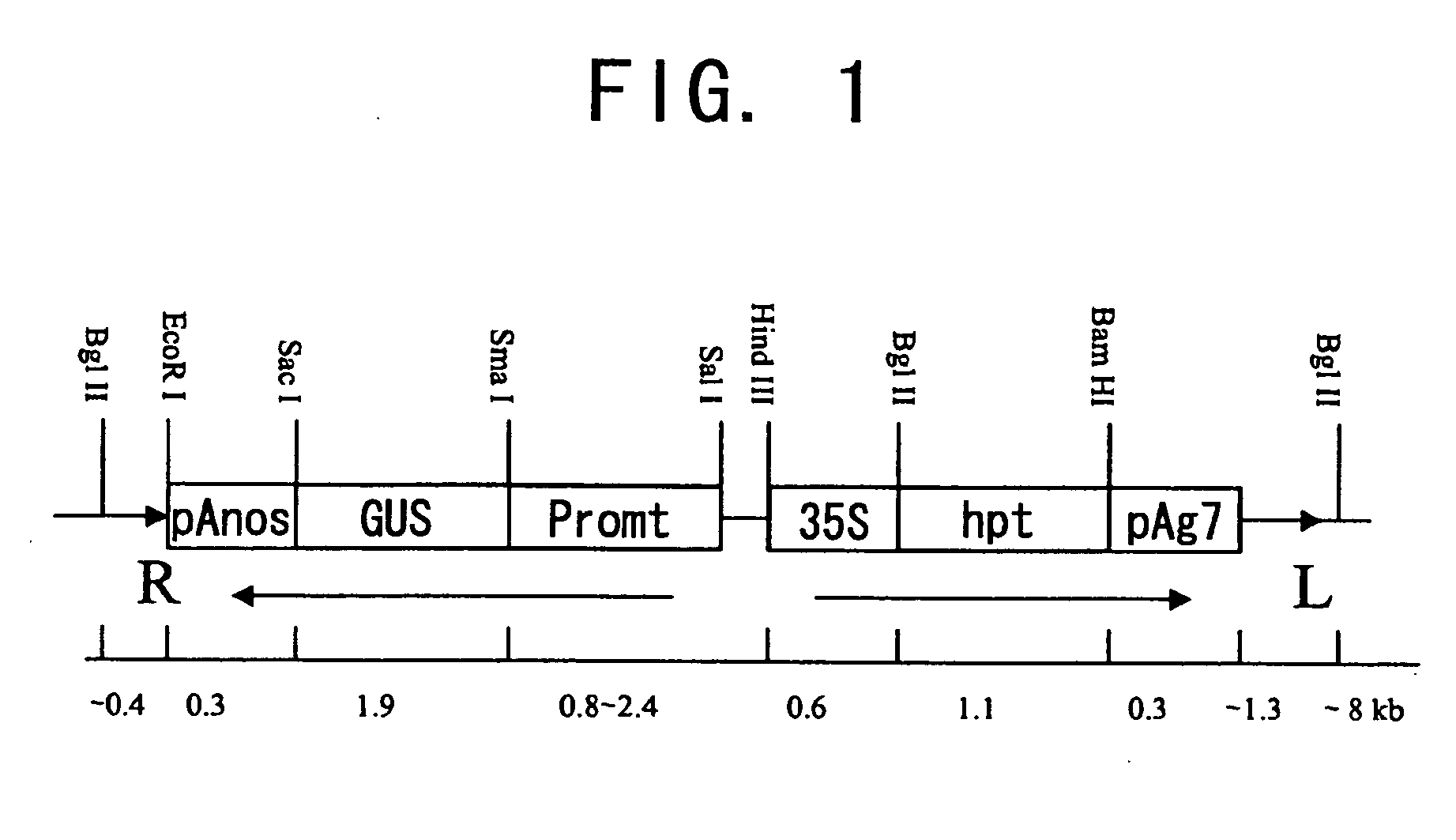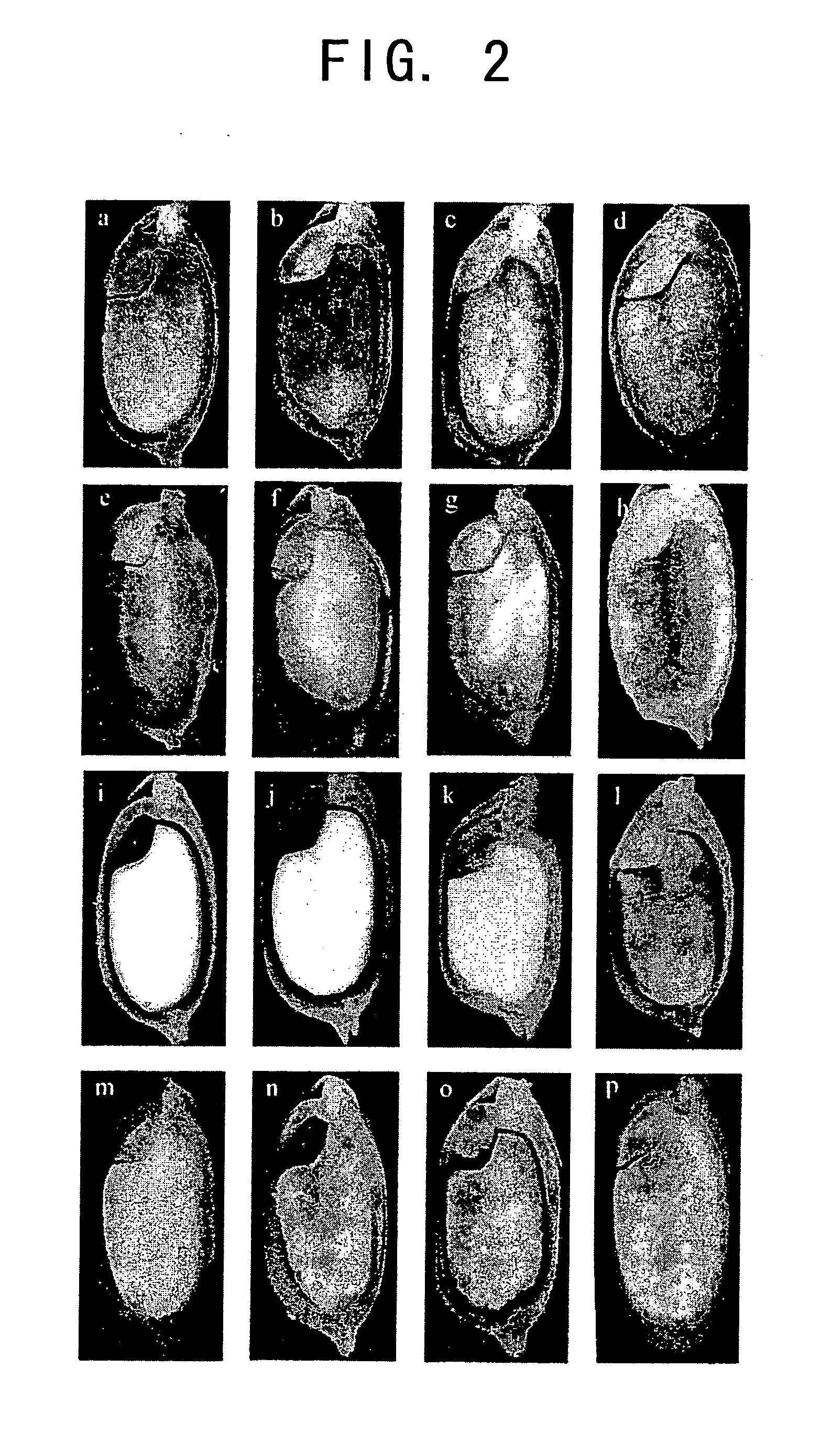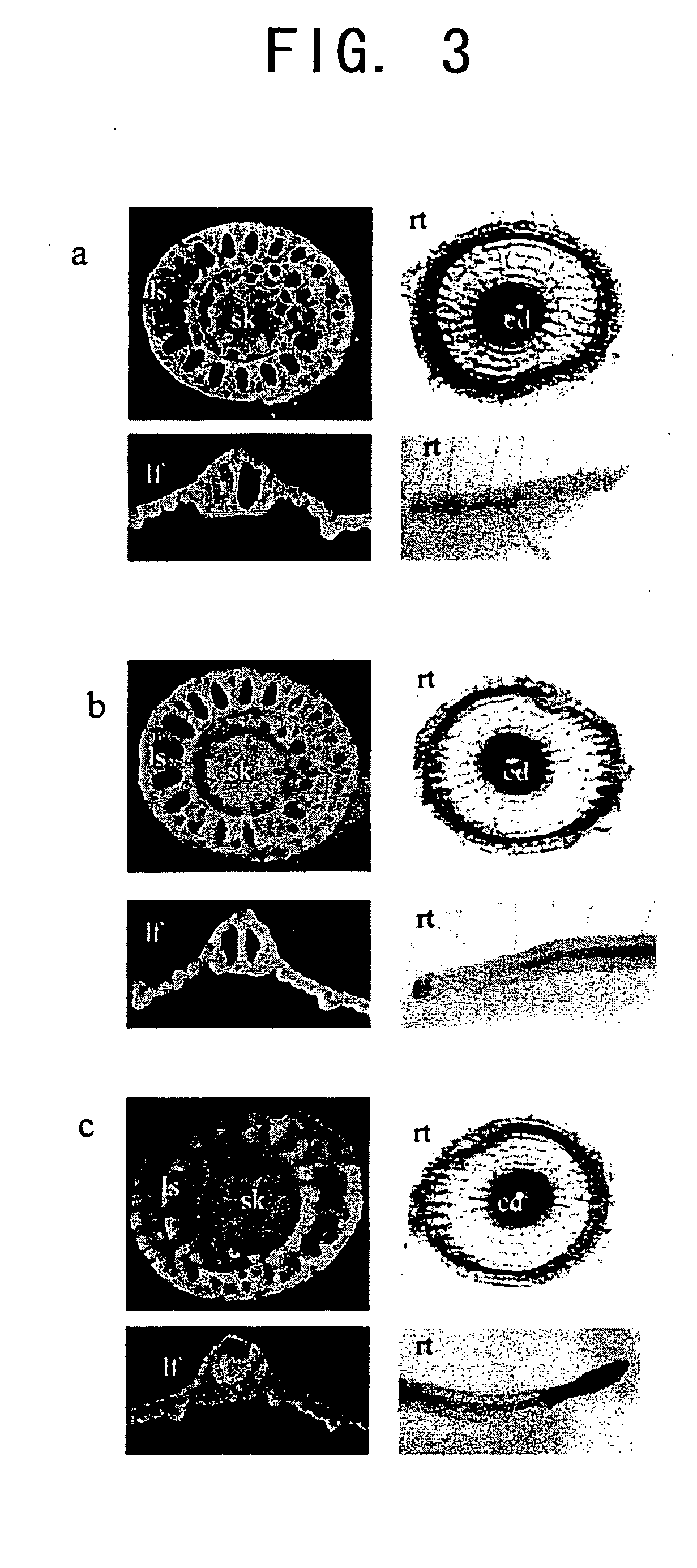Seed-specific gene promoters and uses thereof
a gene promoter and seed technology, applied in the field of seed-specific gene promoters, can solve the problems of limited analysis of cis-regulatory factors involved in endosperm-specific expression, and achieve the effect of higher activity
- Summary
- Abstract
- Description
- Claims
- Application Information
AI Technical Summary
Benefits of technology
Problems solved by technology
Method used
Image
Examples
example 1
Construction of the Promoter-GUS Gene Chimeric Constructs and Isolation of Transgenic Plants
[0074] The expression patterns and promoter activity of a number of genes expressed in seeds were characterized, instead of examining the genes presumed to be regulatory factors. Fifteen different promoters ranging in size from 0.8 to 2.4 kb were isolated by PCR using genomic DNA or genomic clones as a template.
[0075] The genes and the size of their corresponding promoters are as follows: rice 10 kDa prolamin, 0.8 kb; rice 13 kDa prolamin (PG5a), 0.9 kb; rice 16 kDa prolamin, 0.9 kb; rice glutelin GluB-4, 1.4 kb; rice embryo globulin (REG2), 1.3 kb; rice 18 kDa oleosin (Ole18), 1.3 kb; rice glutamate synthase gene (GOGAT), 0.8 kb; rice pyruvate orthophosphate dikinase (PPDK), 0.8 kb; rice ADP-glucose pyrophosphorylase (AGPase), 2.0 kb; rice starch branching enzyme (SBE1), 2.0 kb; and soybean β-conglycinin, 1.0 kb. Rice glutelin GluB-1, 1.3 kb, 2.3 kb; rice glutelin GluB-2, 2.4 kb; rice alan...
example 2
Activity of the Seed Storage Protein Gene Promoters in Seeds
[0080] Transgenic rice seeds were examined by histochemical staining to identify the site of GUS reporter gene expression, which was induced by the seed storage protein promoters. For histochemical analysis, maturing seeds in a stage 17 days after flowering (DAF) were sectioned along their longitudinal axis with a razor blade, and the sections were incubated in 50 mM sodium phosphate buffer (pH 7.0) containing 0.5 mM X-Gluc (5-bromo-4-chloro-3-indolyl-glucuronide) and 20% methanol at 37° C. The optimal incubation time for the staining reaction varied from 30 minutes to overnight, depending on the level of GUS activity.
[0081]FIG. 2 shows the detected expression patterns. Rice glutelin promoters (1.3 kb and 2.3 kb GluB-1, GluB-2, and GluB-4; FIG. 2a to d) and prolamin promoters (10 kDa, 13 kDa, and 16 kDa; FIG. 2e to g) induced GUS gene expression in endosperm. GUS gene expression by the glutelin promoters and prolamin prom...
example 3
GUS Expression Pattern in the Vegetative Organs
[0084] Most of the examined promoters showed either endosperm- or embryo-specific GUS gene expression. However, GUS activity was also detected in the vegetative tissues of transgenic rice comprising the promoters of the 10 kDa prolamin, PPDK, and AGPase genes (FIG. 3), and those comprising the AlaAT promoter (Kikuchi et al., Plant Mol. Biol., 39, 149-159 (1999)). In these transgenic rice plants, GUS activity was detected in leaves, leaf sheaths, and the phloem of vascular bundles in stalks, in addition to in the endosperm or over the entire seed (FIG. 3a to c). GUS activity was also detected in the endodermis of the roots of the transgenic rice. However, the expression pattern obtained with the AGPase promoter was slightly different from those obtained with the PPDK and 10 kDa prolamin promoters. In particular, the AGPase promoter induced high level GUS expression in the apical meristem, whereas the latter two induced ubiquitous staini...
PUM
 Login to View More
Login to View More Abstract
Description
Claims
Application Information
 Login to View More
Login to View More - R&D
- Intellectual Property
- Life Sciences
- Materials
- Tech Scout
- Unparalleled Data Quality
- Higher Quality Content
- 60% Fewer Hallucinations
Browse by: Latest US Patents, China's latest patents, Technical Efficacy Thesaurus, Application Domain, Technology Topic, Popular Technical Reports.
© 2025 PatSnap. All rights reserved.Legal|Privacy policy|Modern Slavery Act Transparency Statement|Sitemap|About US| Contact US: help@patsnap.com



